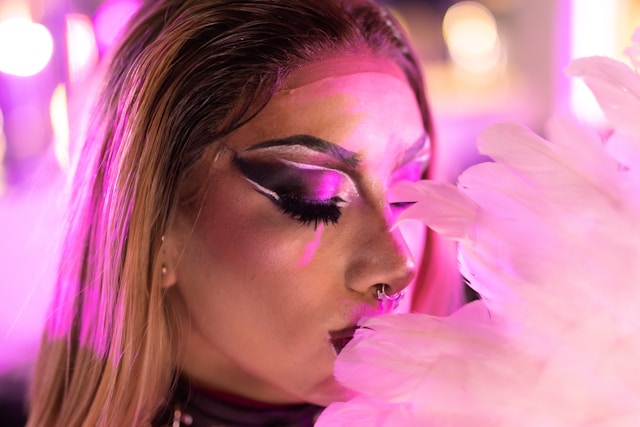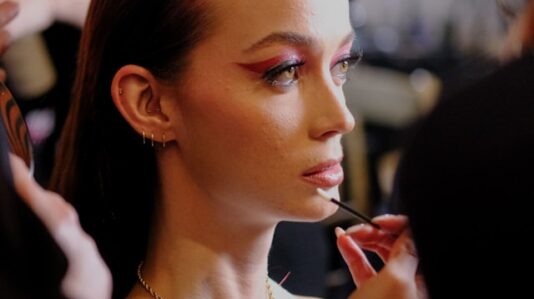Drag artists face a complex web of intellectual property challenges that would make even the most seasoned entertainment lawyer’s head spin. As drag has evolved from underground art form to mainstream cultural phenomenon, performers are discovering that protecting their creative work requires more than just fierce makeup skills and killer heels.
From Underground to Mainstream: The Evolution of Drag IP
Drag’s evolution from the margins to the mainstream has created unprecedented opportunities—and challenges. What began as resistance and community expression in ballroom culture and gay bars has transformed into a multi-million-dollar industry. RuPaul’s Drag Race has spawned a global franchise with contestants launching careers worth millions. But this commercial success has revealed gaps in how intellectual property law protects performance artists whose work centers on identity exploration and gender expression.
The art form’s rich history, stretching back to ancient theatrical traditions and 19th-century American ballroom culture, created a foundation of shared techniques, styles, and cultural knowledge. This communal heritage sits in tension with modern IP law’s focus on individual ownership.
The Unique IP Landscape of Drag Performance
Drag performers create multifaceted intellectual property spanning several categories. Their stage personas represent perhaps their most valuable assets—carefully crafted characters with unique names, backstories, and personalities that function as personal brands. These personas combine elements protectable under trademark law (stage names, logos, catchphrases) with creative expression that could fall under copyright protection (original songs, choreography, comedic routines).
The visual artistry of drag presents another layer of complexity. Original makeup techniques, signature looks, and costume designs represent substantial creative investment. Many performers spend thousands developing their aesthetic. Yet these visual elements exist in a legal gray area, where fashion design receives limited copyright protection and makeup techniques are generally unprotectable.
Performance content adds another dimension. Drag shows often blend original material with parody, tribute performances, and cultural commentary. A drag queen might perform an original song while impersonating a celebrity, creating layers of potential IP issues involving right of publicity, fair use, and transformative work doctrines.
Digital transformation has created new categories of intellectual property: social media presence, streaming content, educational materials like those used in Drag Story Time programs, and brand partnerships all represent valuable assets.
Contemporary Legal Challenges
Perhaps the most pressing challenge facing drag performers today is navigating legislative hostility. Twenty states have introduced drag ban bills, with some successfully passing laws restricting where and when drag can be performed. These laws threaten performers’ civil rights and livelihoods while creating uncertainty around IP investments. How do you build a sustainable brand when the legal framework for your art form is under attack?
Platform discrimination presents another significant hurdle. Social media algorithms and content policies often flag drag content disproportionately, echoing historical patterns of censorship. This digital discrimination affects performers’ ability to build audiences, monetize content, and protect their online presence—critical components of modern creative careers.
Educational drag programming like Drag Story Time has created additional legal complexity. Performers creating family-friendly content must navigate heightened scrutiny while protecting their educational materials and programming concepts.
Community versus individual rights represents an ongoing tension within drag culture itself. Ballroom culture’s emphasis on houses, chosen families, and collective creativity can conflict with IP law’s focus on individual ownership. How do you protect personal creative assets while honoring the community traditions that shaped your art?
Learning from Success Stories
Despite these challenges, many drag artists have successfully navigated legal protection. RuPaul has built a media empire by carefully protecting his brand while supporting community artists. Individual performers have trademarked their stage names, copyrighted original music, and built sustainable businesses around their personas.
Successful strategies often involve comprehensive documentation of original work, strategic trademark applications for stage names and catchphrases, and clear contracts governing collaborations and media appearances. Some performers have formed collective advocacy groups to share legal resources and support each other through challenges.
Building Protection in Uncertain Times
For drag performers looking to protect their creative work, several practical strategies emerge. Document everything—from original makeup tutorials to character development notes to performance videos. This creates a paper trail establishing creation dates and ownership.
Understand fair use in the context of parody and cultural commentary, which are central to drag performance. While celebrity impersonation enjoys some protection as transformative work, the boundaries aren’t always clear, especially when commercial interests are involved.
Build defensible brands by focusing on original elements that can be protected. A stage name might be trademarkable, but a generic description of a performance style probably isn’t. Invest in creating distinctive, original content alongside tributes and parodies.
Know your contracts. As drag becomes more commercialized, performers are increasingly asked to sign agreements that may limit their rights to their own personas or content. Understanding these documents is crucial for maintaining creative control.
The Constitutional Foundation and Future Outlook
Drag enjoys robust constitutional protection as artistic expression under the First Amendment. The Supreme Court has consistently held that the First Amendment protects various forms of entertainment—including film, music, and live performance—from state restrictions. While the Court has created a narrow exception allowing regulation of “obscene” materials, this carve-out is extremely limited. The Supreme Court has repeatedly ruled that states cannot ban artistic expression based solely on moral judgments.
This strong constitutional foundation puts current drag bans on shaky legal ground. However, the First Amendment landscape could shift if drag ban challenges reach the Supreme Court, making ongoing legal advocacy crucial. Meanwhile, growing mainstream acceptance could lead to more comprehensive statutory protections.
The art form’s continued evolution—from drive-in shows during COVID to integration with fine art institutions—will create new categories of protectable work and new challenges for existing legal frameworks. IP law, at its best, should support drag’s goal of creating space where identity exploration and authentic expression are possible.
Protecting Art as Resistance
Ultimately, protecting drag as both an art form and a business requires recognizing its unique position at the intersection of performance, identity, and community. The same creative fearlessness that drives performers to challenge gender norms and social expectations must extend to navigating legal systems designed for more traditional forms of artistic expression.
As the drag community continues to fight for basic recognition and acceptance, intellectual property protection becomes not just a business concern but an act of resistance—ensuring that this vital form of cultural expression can continue to evolve, inspire, and transform lives for generations to come.
Whether you’re a performer just starting to develop your drag persona or an established queen building a media empire, understanding your rights and options in intellectual property law has never been more crucial. In a world where art and identity intersect with commerce and politics, protecting your creative work is protecting your voice—and that’s something worth fighting for, both on stage and in court.
Contribution to this blog by Beau van der Meulen.





